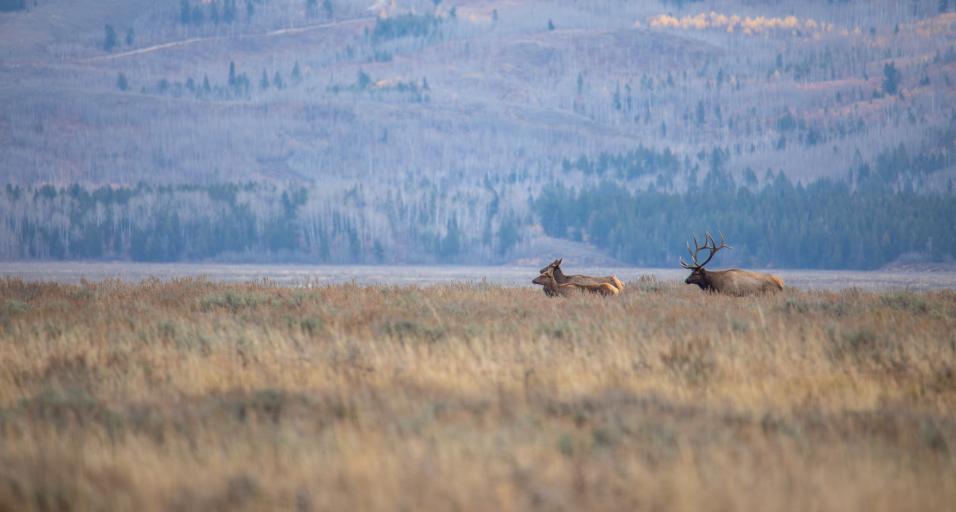Over the last two decades elk populations have thrived in Wyoming. The Wyoming Game and Fish Department estimates the population of elk in the Cowboy State to be about 109,000. In some areas of the state, the population increase has caused damage issues for private landowners, and over the last five years elk damage claims have increased by 42 percent statewide.
“Elk populations continue to be a concern in some portions of the state where hunting access is limited and elk populations exceed our management objectives,” said Rick King, Game and Fish chief of wildlife.
Hunting is the primary mechanism Game and Fish uses to manage big game populations. When elk populations exceed objectives, Game and Fish uses season structure adjustments, access programs and other tools such as auxiliary management seasons and lethal take permits to reduce populations. Changes to elk hunting season structures may involve increasing license quotas, establishing general seasons, extending seasons or issuing late-season cow/calf licenses. These methods aim to increase hunter harvest, with a focus on the reproductive portion of the population – cows.
“Implementing liberal elk hunting seasons does not always work when there is limited public access,” King said. “In an effort to reduce population sizes, the department has worked with landowners to increase access and hunter harvest through our Access Yes Program.”
Game and Fish implements a variety of Access Yes programs in which landowners enroll their property in one of several programs that provide public hunting access. Enrolled landowners are given the flexibility to choose the species hunters can pursue, specific locations on their property and specific dates (within open seasons) that their property is available to the public. In exchange, landowners receive a monetary payment, increased law enforcement presence on the property and assistance in meeting wildlife management goals on their property. Popular programs under Access Yes include hunter walk-in areas, hunter management areas and the hunter/landowner assistance program. Last year, Access Yes opened access to more than 2.6 million acres of land for hunting.
“In some cases, changes to season structure and implementation of Access Yes programs have been insufficient to reduce damage to private lands and manage over-objective elk populations,” King said. “In these cases, Game and Fish is utilizing Chapter 34, Auxiliary Management Licenses and Chapter 56, Lethal Take Permits to address damage concerns.”
Chapter 34, Auxiliary Management Hunting Seasons regulation allows wildlife managers to establish secondary hunting seasons to manage for damage or disease outside of the normal season-setting process. Wildlife managers and landowners work together to establish the hunt area, season dates and other limitations. These licenses, which are sold at the same price as other cow/calf elk licenses, focus harvest on the reproductive segment of the population. To date, the Department has utilized Auxiliary Management seasons in the Cody, Green River, Lander, Laramie, Casper and Pinedale regions.
Chapter 56, Regulation Governing Lethal Taking of Wildlife regulation allows the take of designated wildlife species if necessary to reduce damage, risk to human health and safety, disease transmission or to otherwise meet Game and Fish management objectives. The Department has issued these permits to willing landowners in an effort to increase cow/calf elk harvest. Landowners utilizing these permits are required to report their harvest and properly care for the meat in accordance with regulations. The Department has issued these permits in the Iron Mountain herd unit. Additionally, the Game and Fish has implemented lethal take permits using contract employees. In early 2023, this approach resulted in the harvest of 129 cow elk. The harvested elk were tested for chronic wasting disease, and all negative animals were donated to families in need through the Food from the Field program.
The Department looks to continue this effort in 2024.
“The Department – with the support of the Commission – is committed to managing our elk herds toward established objectives,” King said.
To learn more about Wyoming’s elk populations and the various management tools wildlife managers use within each herd unit visit the Game and Fish website.
Elk management in Wyoming



